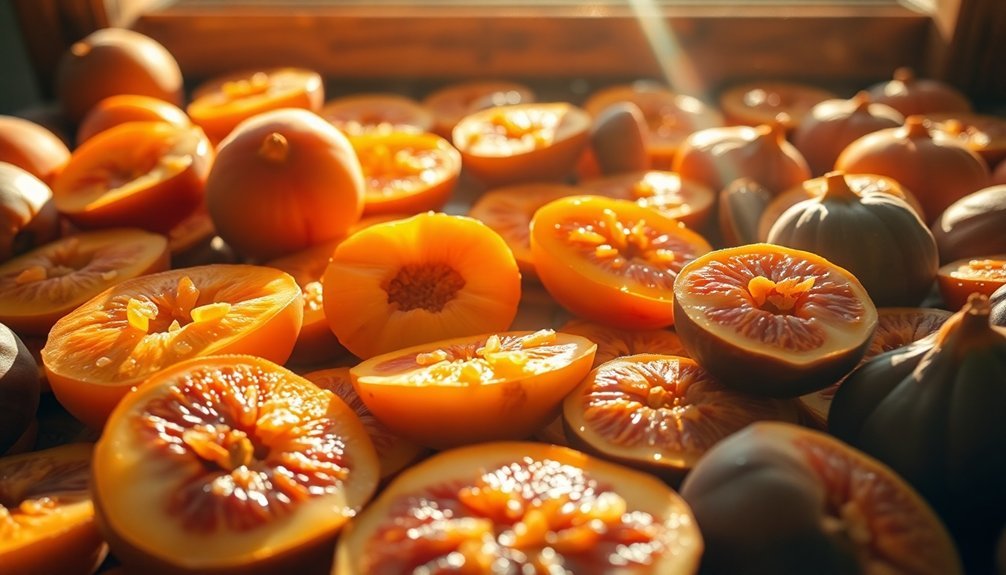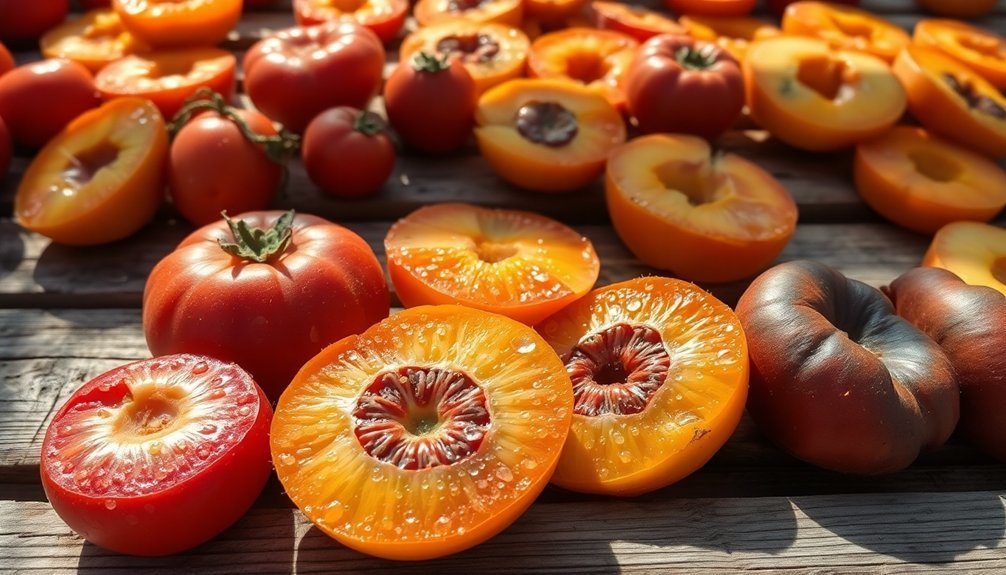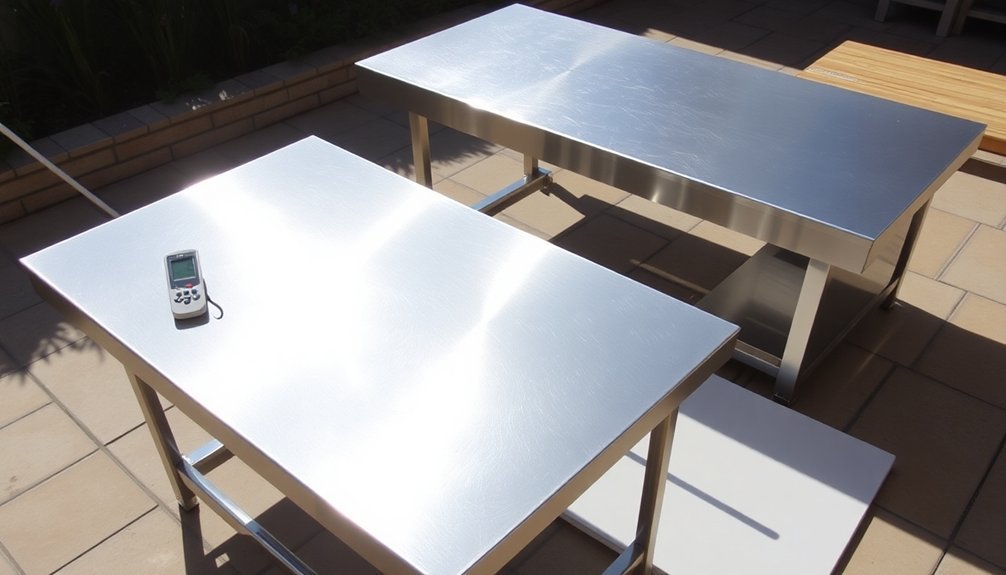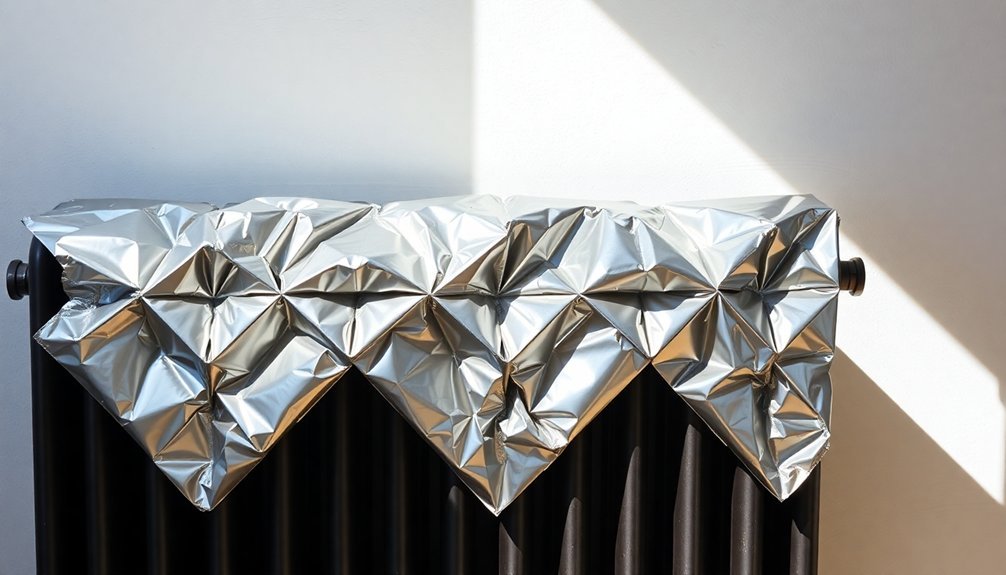When you sun-dry fruits, you're actually concentrating their natural sugars through moisture removal. The process works by using solar heat above 86°F to slowly extract water while preserving the fruits' natural sweetness. As water evaporates, the sugar molecules become more concentrated, making each bite taste sweeter than fresh fruit. The sun's warmth also triggers enzymes that help convert starches to sugars, further enhancing the sweetness. It's similar to reducing a sauce – less water means more intense flavors. Understanding the precise science behind this natural sweetening reveals fascinating details about nature's preservation process.
The Science Behind Natural Sweetening

During the sun-drying process, fruits naturally become sweeter through a fascinating interaction of chemical and physical changes. As the sun's heat gradually removes water from the fruit, you'll notice that the sugars become more concentrated. This concentration occurs because the same amount of natural sugars now exists in a smaller volume, intensifying the sweetness you taste.
You can measure this increased sugar concentration using a refractometer, which shows the rising percentage of soluble solids as water evaporates. The process affects different types of sugars – fructose, glucose, and sucrose – with fructose providing 1.7 times more sweetness than sucrose. This variation in sugar types contributes to the complex sweet profile you experience in dried fruits.
What's particularly interesting is how the reduced water content helps preserve this enhanced sweetness. When there's less water in the fruit, enzymatic reactions slow down considerably, which means the sweet compounds remain stable for longer periods. Similar to how crushed monk fruit releases its natural sweetness during processing, the concentration of sugars intensifies the overall flavor.
The dehydration process effectively locks in the concentrated natural juices and sweet compounds, creating a more intense flavor profile that you'll continue to enjoy long after the drying process is complete.
Enzyme Actions During Fruit Ripening
Nature's ripening process relies heavily on a complex network of enzymes that orchestrate fruit development and maturation. When you examine this process closely, you'll find that ethylene, a natural plant hormone, triggers a cascade of enzymatic activities at concentrations as low as 0.1-1.0 ppm.
You'll notice that several key enzymes work together to modify fruit cell walls during ripening. Polygalacturonase (PG), pectic methyl esterase (PME), and pectic lyase (PL) break down pectin and other cell wall components, leading to the softening you experience in ripe fruits. The conversion of starch to sugars significantly impacts texture changes, particularly evident in fruits like bananas.
Each fruit type shows different patterns of enzyme activity – for example, avocados undergo extensive pectin breakdown, while apples display unique combinations of exo-PG, PME, and PL activities.
If you're interested in controlling this process, scientists have developed various methods. They can suppress ethylene production by downregulating ACC oxidase genes or block ethylene perception using 1-Methylcyclopropene (1-MCP).
These techniques help maintain fruit quality by delaying ripening. You'll find that understanding these enzyme actions is essential for optimizing sun-drying processes and preserving fruit quality during processing.
Temperature Effects On Sugar Concentration

You'll notice that fruit sugars become more concentrated as water evaporates during the sun-drying process, leading to an intensified sweetness in the final product.
The temperature needs to stay above 86°F (30°C) to maintain effective drying while keeping humidity below 60%, which creates ideal conditions for sugar concentration.
While the enzymes responsible for fruit ripening slow down at these temperatures, the heat-driven concentration of existing sugars continues to enhance the fruit's perceived sweetness. Solar drying is a cost-effective method compared to other drying techniques, though it may not be as efficient as convective systems.
Heat-Driven Sugar Concentration
Temperature plays a fascinating role in determining how sweet your dried fruits will become. When you're drying fruits, controlled temperatures between 60-70°C help concentrate sugars naturally without damaging the fruit's quality. You'll want to avoid direct sunlight, as it can bleach the color and reduce vitamins, though it won't directly affect sugar levels.
During the drying process, you're fundamentally removing water until you reach about 15% moisture content. This concentrates the existing sugars, making the fruit taste sweeter. You can enhance this process by using a concentrated sugar solution before drying, which helps through osmosis.
| Temperature Range | Effects | Best Practices |
|---|---|---|
| 60-70°C | Ideal sugar concentration | Use controlled heat sources |
| Above 70°C | Risk of overheating and spoilage | Monitor temperature carefully |
| Below 60°C | Slower drying, potential spoilage | Extend drying time if needed |
The process removes more than 50% of the fruit's initial water weight, naturally intensifying sweetness. You'll find that controlling temperature during drying isn't about creating new sugars – it's about concentrating the ones that are already there while preserving the fruit's quality.
Enzymatic Activity Under Heat
During fruit drying, enzymatic processes play a crucial role in determining final sugar concentrations. When you're drying fruits, the temperature and air velocity greatly impact how enzymes like amylase and invertase behave. You'll find that these enzymes work best when dried at temperatures between 40°C to 80°C with an air velocity of 1.4 m/s.
The relationship between temperature and enzyme activity isn't straightforward. While lower temperatures around 40°C keep enzymes active longer, they don't always preserve the most enzyme units due to extended exposure time.
On the flip side, if you dry at higher temperatures near 80°C, you'll notice faster degradation of amylase and invertase, even though the drying time is shorter.
You can optimize sugar content by managing temperature variations. For instance, a day-night temperature difference of 12°C enhances photosynthesis and sugar-related enzyme activity.
However, you'll want to avoid fruit surface temperatures above 30°C, as they can negatively impact sugar accumulation. By controlling these temperature conditions, you're fundamentally fine-tuning the enzymatic processes that influence the final sweetness of your dried fruit.
Solar Drying Versus Fresh Fruit
When you compare dried and fresh fruit, you'll notice that solar drying concentrates natural sugars as moisture evaporates, making the dried version taste significantly sweeter.
You can observe this intensification of flavors particularly in solar-dried fruits, where improved dryers maintain temperatures around 40.3°C for ideal moisture removal while preserving natural taste compounds.
The gentle and gradual drying process helps you experience more pronounced natural sweetness and complex fruit flavors, as the moisture content reduces to 16-18% while retaining the fruit's essential characteristics.
Moisture-Sugar Content Relationship
Fresh fruits contain considerably higher moisture levels than their dried counterparts, creating a delicate balance between water content and natural sugars. When you examine fresh mangoes, you'll find they're packed with moisture that dilutes their natural sugar concentration, affecting both texture and taste.
During the solar drying process, you'll notice significant changes in this moisture-sugar relationship. As the water evaporates, the sugars become more concentrated, though not all drying methods yield the same results.
Solar-dried mangoes retain less sugar (22.36°Brix) compared to oven-dried versions (52.02°Brix), while maintaining a relative humidity of 14.17%.
You'll find that the drying process triggers complex chemical reactions, particularly non-enzymatic browning, which affects both sugar content and color. The relationship between moisture and sugar isn't just about concentration – it's about preservation too.
When you remove moisture through solar drying, you're actually helping to preserve the fruit, though you're also altering its sugar profile. The final sugar concentration you'll get depends heavily on your drying conditions, including temperature and duration.
This intricate balance determines the ultimate quality and shelf life of your dried fruit.
Natural Flavor Intensification
Solar drying transforms the flavor profile of fruits in remarkable ways that go beyond simple sugar concentration. When you expose fruits to solar drying, you'll notice that their natural flavors become more intense through a gradual process that preserves the original taste characteristics.
Unlike high-heat methods that can alter flavors through caramelization, solar drying maintains the fruit's authentic flavor compounds while removing excess moisture.
The natural intensification process works through these key mechanisms:
- Slow moisture removal at temperatures above 85°F (29°C) concentrates flavor compounds without damaging them
- Steady airflow guarantees even drying while preserving volatile compounds responsible for taste
- Natural solar radiation helps retain nutrients and antioxidants that contribute to flavor
- Ideal humidity levels below 60% prevent spoilage while maintaining flavor quality
You'll find that solar-dried fruits retain about 15-20% moisture content, creating the perfect balance for long-term storage while preserving intense flavors.
This method's effectiveness lies in its gentle approach – using renewable energy and natural air circulation to enhance flavors rather than alter them through artificial means.
Moisture Removal And Sugar Changes

The dehydration process fundamentally changes a fruit's sugar composition through two key mechanisms: moisture removal and sugar absorption.
When you sun-dry fruit, you'll notice that moisture removal concentrates the natural sugars already present, while osmotic dehydration allows additional sugar uptake from the solution.
You'll find that higher sugar concentrations in the osmotic solution (around 60%) lead to faster water loss compared to lower concentrations. During the first few hours, you'll see rapid moisture removal, though this rate gradually decreases as the process reaches equilibrium.
The type of sugar you use matters too – a fructose-sorbitol combination results in different sugar uptake patterns than using fructose alone.
When you remove moisture, you're not just concentrating sugars – you're also changing the fruit's weight and texture.
You'll notice significant weight reduction, especially with higher sugar solution concentrations. As the fruit dries, a concentrated sugar layer develops under its surface.
If you're using humectants like sorbitol, you'll experience even greater weight reduction and texture changes.
The final product becomes sweeter through both natural sugar concentration and absorbed sugars from the osmotic solution.
Optimal Conditions For Sweet Results
Achieving perfectly sweet sun-dried fruits requires specific conditions that you'll need to monitor closely. The sweetness intensifies naturally during the drying process, but you'll get the best results when you maintain temperatures above 86°F (30°C) and keep humidity below 60%.
You'll want to choose fully ripened fruits and prepare them properly to maximize their natural sugar concentration.
To guarantee your fruits develop peak sweetness during sun drying, follow these essential steps:
- Select fresh, perfectly ripe fruits – they'll have the highest natural sugar content and produce the sweetest results.
- Pretreat your fruits with ascorbic acid or lemon juice to prevent darkening while maintaining their natural sweetness.
- Use appropriate drying trays with proper ventilation, and position them in direct sunlight during hot, breezy days.
- Bring fruits indoors at night to prevent moisture condensation that could interrupt the sweetening process.
You'll know you've achieved the right conditions when your fruits develop an intensified sweet flavor without any signs of fermentation or mold.
Remember to condition your dried fruits afterward by storing them in containers and shaking daily for 4 to 10 days to distribute any remaining moisture evenly.
Frequently Asked Questions
Can Certain Fruits Become Too Sweet During the Sun-Drying Process?
Yes, you'll find that overly ripe fruits can become excessively sweet during sun-drying as their natural sugars concentrate. It's best to choose fruits at peak ripeness to avoid an overwhelming sweetness level.
Does Nighttime Humidity Affect the Sweetness of Sun-Dried Fruits?
Yes, nighttime humidity can reduce your fruit's sweetness by adding moisture back into it. You'll get less concentrated sugars if dew or humid air rehydrates the fruit during overnight exposure.
Why Do Some Dried Fruits Develop White Spots on Their Surface?
You'll notice white spots on dried fruits mainly due to natural sugar crystallization, also called "sugaring." These spots form when fruit sugars migrate to the surface during drying, and they're completely safe to eat.
How Does Altitude Impact the Sugar Concentration in Sun-Dried Fruits?
You'll find that higher altitudes typically increase sugar concentration in sun-dried fruits due to stronger solar radiation and lower night temperatures. However, some fruits like kiwi may show decreased sugar levels at elevation.
Can Overripe Fruits Be Successfully Used for Sun Drying?
You shouldn't use overripe fruits for sun drying as they're prone to spoilage, have excessive moisture, and won't dry properly. They'll likely produce poor results in texture, flavor, and storage quality.
In Summary
You'll find that sun-dried fruits taste sweeter primarily because the drying process concentrates their natural sugars. As water evaporates, the sugar-to-mass ratio increases considerably. While enzymes continue breaking down complex carbohydrates into simpler sugars during the early drying stages, it's mainly the moisture reduction that creates that intense sweetness you enjoy. Remember, proper drying conditions guarantee the best flavor development.





Leave a Reply